US Airways 2008 Annual Report Download - page 25
Download and view the complete annual report
Please find page 25 of the 2008 US Airways annual report below. You can navigate through the pages in the report by either clicking on the pages listed below, or by using the keyword search tool below to find specific information within the annual report.-
 1
1 -
 2
2 -
 3
3 -
 4
4 -
 5
5 -
 6
6 -
 7
7 -
 8
8 -
 9
9 -
 10
10 -
 11
11 -
 12
12 -
 13
13 -
 14
14 -
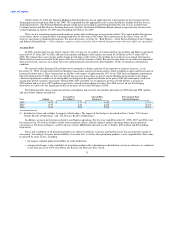 15
15 -
 16
16 -
 17
17 -
 18
18 -
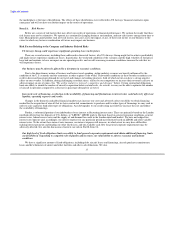 19
19 -
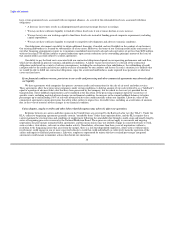 20
20 -
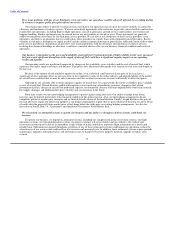 21
21 -
 22
22 -
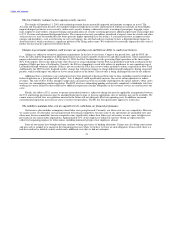 23
23 -
 24
24 -
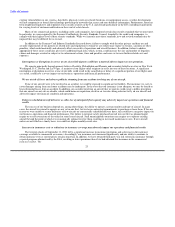 25
25 -
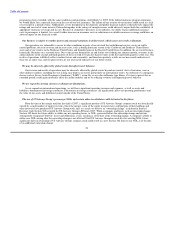 26
26 -
 27
27 -
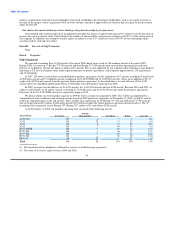 28
28 -
 29
29 -
 30
30 -
 31
31 -
 32
32 -
 33
33 -
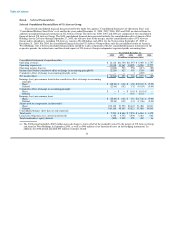 34
34 -
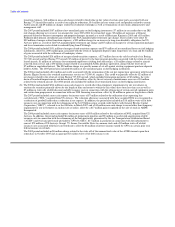 35
35 -
 36
36 -
 37
37 -
 38
38 -
 39
39 -
 40
40 -
 41
41 -
 42
42 -
 43
43 -
 44
44 -
 45
45 -
 46
46 -
 47
47 -
 48
48 -
 49
49 -
 50
50 -
 51
51 -
 52
52 -
 53
53 -
 54
54 -
 55
55 -
 56
56 -
 57
57 -
 58
58 -
 59
59 -
 60
60 -
 61
61 -
 62
62 -
 63
63 -
 64
64 -
 65
65 -
 66
66 -
 67
67 -
 68
68 -
 69
69 -
 70
70 -
 71
71 -
 72
72 -
 73
73 -
 74
74 -
 75
75 -
 76
76 -
 77
77 -
 78
78 -
 79
79 -
 80
80 -
 81
81 -
 82
82 -
 83
83 -
 84
84 -
 85
85 -
 86
86 -
 87
87 -
 88
88 -
 89
89 -
 90
90 -
 91
91 -
 92
92 -
 93
93 -
 94
94 -
 95
95 -
 96
96 -
 97
97 -
 98
98 -
 99
99 -
 100
100 -
 101
101 -
 102
102 -
 103
103 -
 104
104 -
 105
105 -
 106
106 -
 107
107 -
 108
108 -
 109
109 -
 110
110 -
 111
111 -
 112
112 -
 113
113 -
 114
114 -
 115
115 -
 116
116 -
 117
117 -
 118
118 -
 119
119 -
 120
120 -
 121
121 -
 122
122 -
 123
123 -
 124
124 -
 125
125 -
 126
126 -
 127
127 -
 128
128 -
 129
129 -
 130
130 -
 131
131 -
 132
132 -
 133
133 -
 134
134 -
 135
135 -
 136
136 -
 137
137 -
 138
138 -
 139
139 -
 140
140 -
 141
141 -
 142
142 -
 143
143 -
 144
144 -
 145
145 -
 146
146 -
 147
147 -
 148
148 -
 149
149 -
 150
150 -
 151
151 -
 152
152 -
 153
153 -
 154
154 -
 155
155 -
 156
156 -
 157
157 -
 158
158 -
 159
159 -
 160
160 -
 161
161 -
 162
162 -
 163
163 -
 164
164 -
 165
165 -
 166
166 -
 167
167 -
 168
168 -
 169
169 -
 170
170 -
 171
171 -
 172
172 -
 173
173 -
 174
174 -
 175
175 -
 176
176 -
 177
177 -
 178
178 -
 179
179 -
 180
180 -
 181
181 -
 182
182 -
 183
183 -
 184
184 -
 185
185 -
 186
186 -
 187
187 -
 188
188 -
 189
189 -
 190
190 -
 191
191 -
 192
192 -
 193
193 -
 194
194 -
 195
195 -
 196
196 -
 197
197 -
 198
198 -
 199
199 -
 200
200 -
 201
201 -
 202
202 -
 203
203 -
 204
204 -
 205
205 -
 206
206 -
 207
207 -
 208
208 -
 209
209 -
 210
210 -
 211
211 -
 212
212 -
 213
213 -
 214
214 -
 215
215 -
 216
216 -
 217
217 -
 218
218 -
 219
219 -
 220
220 -
 221
221 -
 222
222 -
 223
223 -
 224
224 -
 225
225 -
 226
226 -
 227
227 -
 228
228 -
 229
229 -
 230
230 -
 231
231 -
 232
232 -
 233
233 -
 234
234 -
 235
235 -
 236
236 -
 237
237 -
 238
238 -
 239
239 -
 240
240 -
 241
241 -
 242
242 -
 243
243 -
 244
244 -
 245
245 -
 246
246 -
 247
247 -
 248
248 -
 249
249 -
 250
250 -
 251
251 -
 252
252 -
 253
253 -
 254
254 -
 255
255 -
 256
256 -
 257
257 -
 258
258 -
 259
259 -
 260
260 -
 261
261 -
 262
262 -
 263
263 -
 264
264 -
 265
265 -
 266
266 -
 267
267 -
 268
268 -
 269
269 -
 270
270 -
 271
271 -
 272
272 -
 273
273 -
 274
274 -
 275
275 -
 276
276 -
 277
277 -
 278
278 -
 279
279 -
 280
280 -
 281
281 -
 282
282 -
 283
283 -
 284
284 -
 285
285 -
 286
286 -
 287
287 -
 288
288 -
 289
289 -
 290
290 -
 291
291 -
 292
292 -
 293
293 -
 294
294 -
 295
295 -
 296
296 -
 297
297 -
 298
298 -
 299
299 -
 300
300 -
 301
301 -
 302
302 -
 303
303 -
 304
304 -
 305
305 -
 306
306 -
 307
307 -
 308
308 -
 309
309 -
 310
310 -
 311
311 -
 312
312 -
 313
313 -
 314
314 -
 315
315 -
 316
316 -
 317
317 -
 318
318 -
 319
319 -
 320
320 -
 321
321 -
 322
322 -
 323
323 -
 324
324 -
 325
325 -
 326
326 -
 327
327 -
 328
328 -
 329
329 -
 330
330 -
 331
331 -
 332
332 -
 333
333 -
 334
334 -
 335
335 -
 336
336 -
 337
337 -
 338
338 -
 339
339 -
 340
340 -
 341
341 -
 342
342 -
 343
343 -
 344
344 -
 345
345 -
 346
346 -
 347
347 -
 348
348 -
 349
349 -
 350
350 -
 351
351 -
 352
352 -
 353
353 -
 354
354 -
 355
355 -
 356
356 -
 357
357 -
 358
358 -
 359
359 -
 360
360 -
 361
361 -
 362
362 -
 363
363 -
 364
364 -
 365
365 -
 366
366 -
 367
367 -
 368
368 -
 369
369 -
 370
370 -
 371
371 -
 372
372 -
 373
373 -
 374
374 -
 375
375 -
 376
376 -
 377
377 -
 378
378 -
 379
379 -
 380
380 -
 381
381 -
 382
382 -
 383
383 -
 384
384 -
 385
385 -
 386
386 -
 387
387 -
 388
388 -
 389
389 -
 390
390 -
 391
391 -
 392
392 -
 393
393 -
 394
394 -
 395
395 -
 396
396 -
 397
397 -
 398
398 -
 399
399 -
 400
400 -
 401
401
 |
 |

Table of Contents
existing vulnerabilities in our systems, data thefts, physical system or network break-ins or inappropriate access, or other developments
will not compromise or breach the technology protecting the networks that access and store database information. Furthermore, there has
been heightened legislative and regulatory focus on data security in the U.S. and abroad (particularly in the EU), including requirements
for varying levels of customer notification in the event of a data breach.
Many of our commercial partners, including credit card companies, have imposed certain data security standards that we must meet.
In particular, we were required by the Payment Card Industry Security Standards Council, founded by the credit card companies, to
comply with their highest level of data security standards. While we currently meet these standards, new and revised standards may be
imposed that may be difficult for us to meet.
In addition to the Payment Card Industry Standards discussed above, failure to comply with the other privacy and data use and
security requirements of our partners or related laws and regulations to which we are subject may expose us to fines, sanctions or other
penalties, which could materially and adversely affect our results of operations and overall business. In addition, failure to address
appropriately these issues could also give rise to additional legal risks, which, in turn, could increase the size and number of litigation
claims and damages asserted or subject us to enforcement actions, fines and penalties and cause us to incur further related costs and
expenses.
Interruptions or disruptions in service at one of our hub airports could have a material adverse impact on our operations.
We operate principally through primary hubs in Charlotte, Philadelphia and Phoenix and secondary hubs/focus cities in New York,
Washington, D.C., Boston and Las Vegas. A majority of our flights either originate in or fly into one of these locations. A significant
interruption or disruption in service at one of our hubs could result in the cancellation or delay of a significant portion of our flights and,
as a result, could have a severe impact on our business, operations and financial performance.
We are at risk of losses and adverse publicity stemming from any accident involving any of our aircraft.
If one of our aircraft were to be involved in an accident, we could be exposed to significant tort liability. The insurance we carry to
cover damages arising from any future accidents may be inadequate. In the event that our insurance is not adequate, we may be forced to
bear substantial losses from an accident. In addition, any accident involving an aircraft that we operate could create a public perception
that our aircraft are not safe or reliable, which could harm our reputation, result in air travelers being reluctant to fly on our aircraft and
adversely impact our financial condition and operations.
Delays in scheduled aircraft deliveries or other loss of anticipated fleet capacity may adversely impact our operations and financial
results.
The success of our business depends on, among other things, the ability to operate a certain number and type of aircraft. In many
cases, the aircraft we intend to operate are not yet in our fleet, but we have contractual commitments to purchase or lease them. If for any
reason we were unable to secure deliveries of new aircraft on contractually scheduled delivery dates, this could have a negative impact on
our business, operations and financial performance. Our failure to integrate newly purchased aircraft into our fleet as planned might
require us to seek extensions of the terms for some leased aircraft. Such unanticipated extensions may require us to operate existing
aircraft beyond the point at which it is economically optimal to retire them, resulting in increased maintenance costs. If new aircraft
orders are not filled on a timely basis, we could face higher monthly rental rates.
Increases in insurance costs or reductions in insurance coverage may adversely impact our operations and financial results.
The terrorist attacks of September 11, 2001 led to a significant increase in insurance premiums and a decrease in the insurance
coverage available to commercial air carriers. Accordingly, our insurance costs increased significantly and our ability to continue to
obtain insurance even at current prices remains uncertain. In addition, we have obtained third party war risk (terrorism) insurance through
a special program administered by the FAA, resulting in lower premiums than if we had obtained this insurance in the commercial
insurance market. The
23
